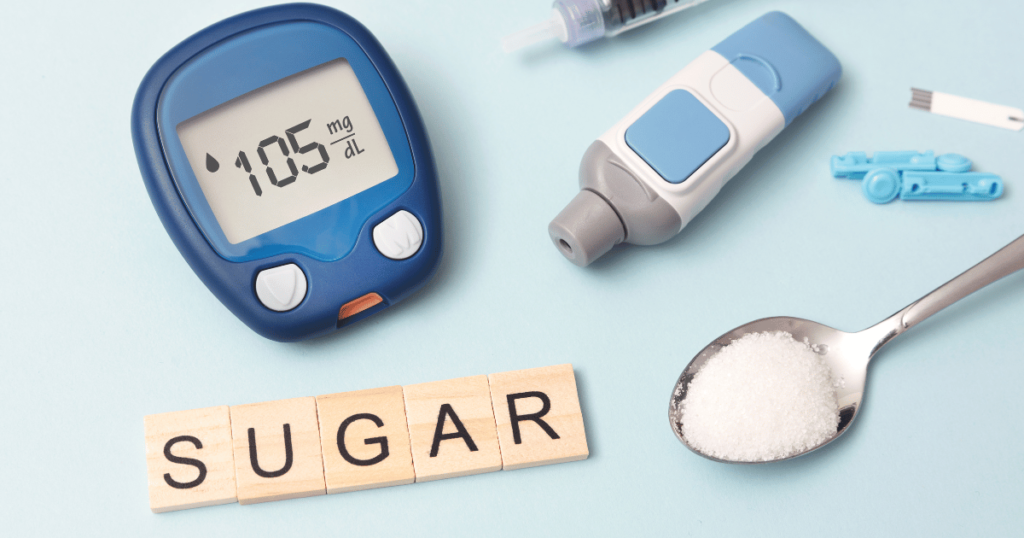Before It’s Late: Spotting the Early Signs of Diabetes

Diabetes, a word we often hear but might not fully understand, affects millions of Americans each year. It’s a condition that can have far-reaching implications on our health if not detected and managed early. This post aims to unravel the mystery behind the early signs of diabetes, helping you stay informed and proactive in your health journey.
Understanding Diabetes
Diabetes comes in two main forms: Type 1 and Type 2, each with distinct characteristics. Type 1 diabetes is an autoimmune condition. In this form, the body’s immune system mistakenly attacks and destroys the insulin-producing cells in the pancreas. Insulin is a hormone crucial for transporting glucose (sugar) from the bloodstream into the cells for energy. Without sufficient insulin, blood sugar levels rise, leading to various health issues. Type 1 diabetes is often diagnosed in children and young adults, hence it was previously known as juvenile diabetes. However, it can occur at any age. It’s less common than Type 2, accounting for about 5-10% of all diabetes cases.
On the other hand, Type 2 diabetes is far more prevalent, making up approximately 90-95% of all diabetes cases. In Type 2 diabetes, the issue isn’t the lack of insulin, but rather the body’s inability to use insulin effectively – a condition known as insulin resistance. Initially, the pancreas compensates by producing more insulin, but over time it can’t keep up, leading to elevated blood sugar levels. Unlike Type 1, Type 2 diabetes is often linked to lifestyle factors. It’s more commonly seen in adults, but with changing lifestyle habits, it’s increasingly being diagnosed in younger individuals. Factors such as obesity, lack of physical activity, poor diet, and genetic predisposition significantly contribute to the risk of developing Type 2 diabetes. What’s crucial to understand is that while Type 1 diabetes is not preventable, many cases of Type 2 diabetes can be prevented or delayed through healthy lifestyle choices.”
Why Early Detection is Crucial
Early detection of diabetes is critical. It can prevent or delay complications such as heart disease, stroke, kidney failure, vision problems, and nerve damage. Knowing the early signs enables individuals to seek medical advice and make necessary lifestyle changes sooner.
Spotting the Early Signs
- Frequent Urination and Increased Thirst: Your body tries to get rid of excess sugar through urination, leading to dehydration and a consequent increase in thirst.
- Unexpected Weight Loss: Despite eating more, you might lose weight as your body starts burning fat and muscle for energy due to insufficient insulin.
- Increased Hunger: Fluctuations in blood sugar levels can lead to sudden hunger pangs.
- Blurred Vision: High blood sugar levels can affect your eyes, leading to temporary or long-term vision problems.
- Fatigue: Your body’s inefficiency in using sugar for energy makes you feel more tired than usual.
- Slow Healing Wounds: High sugar levels in the blood can affect your body’s healing process, making it slower than normal.
- Tingling or Numbness in Hands/Feet: This is a sign of nerve damage caused by prolonged high blood sugar levels.
- Darkened Skin Areas: Common in Type 2 diabetes, this condition is known as acanthosis nigricans and usually appears in folds and creases of the skin.
Risk Factors to Consider
Some people are more at risk of developing diabetes. These include individuals with a family history of diabetes, overweight or obese individuals, people with an inactive lifestyle, and those with a history of gestational diabetes or polycystic ovary syndrome (PCOS). Age also plays a role; those above 45 are at higher risk.
Lifestyle Changes: A Preventative Approach
Early detection should be coupled with lifestyle changes:
- Healthy Eating: Opt for a balanced diet rich in fiber, such as whole grains, fruits, and vegetables, and low in processed sugars and fats.
- Regular Exercise: Aim for at least 150 minutes of moderate aerobic activity per week.
- Weight Management: Losing even a small amount of weight can significantly reduce the risk of developing Type 2 diabetes.
- Regular Check-ups: Especially if you fall into the high-risk category, regular blood sugar monitoring and health check-ups are essential.
The Power of Knowledge and Action
Understanding the early signs of diabetes is your first defense against this growing health concern. If you or someone you know exhibits these symptoms, it’s important to consult a healthcare professional. They can conduct necessary tests and guide managing or preventing diabetes.
early signs of diabetes
Conclusion
Diabetes might seem daunting, but knowledge is power. By being aware of the early signs and taking active steps in managing your lifestyle, you can significantly reduce your risk or effectively manage diabetes. Remember, the journey to better health begins with awareness and is sustained through informed action. Let’s take that step today for a healthier tomorrow.
Final Word
This article is for informational purposes only and should not be considered medical advice. Always consult with a healthcare professional for medical advice, diagnosis, or treatment. Stay informed, stay healthy!



